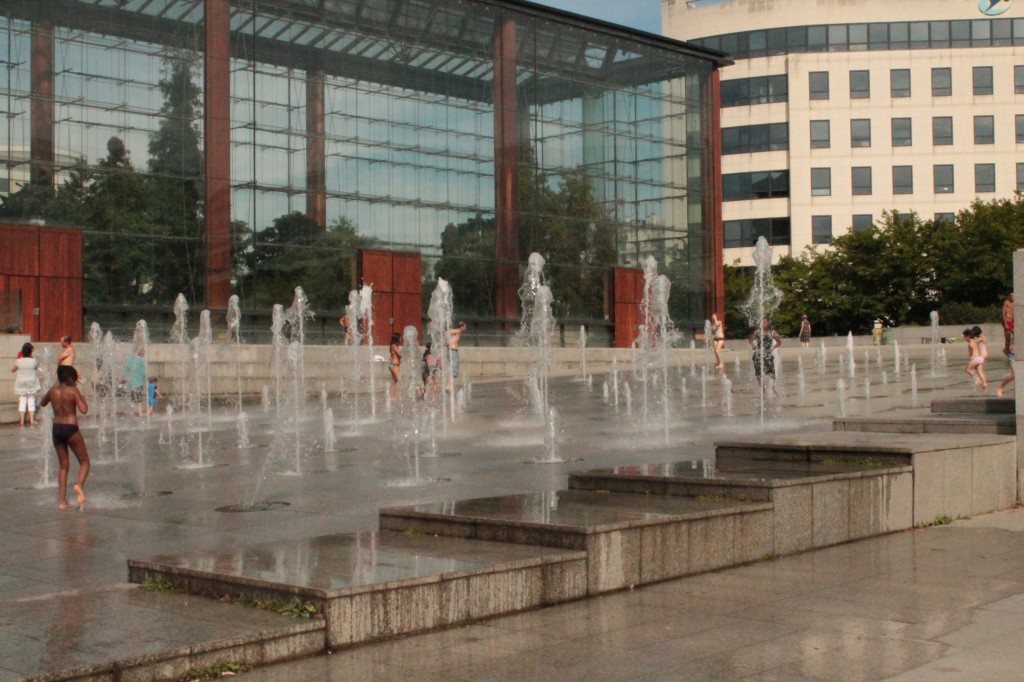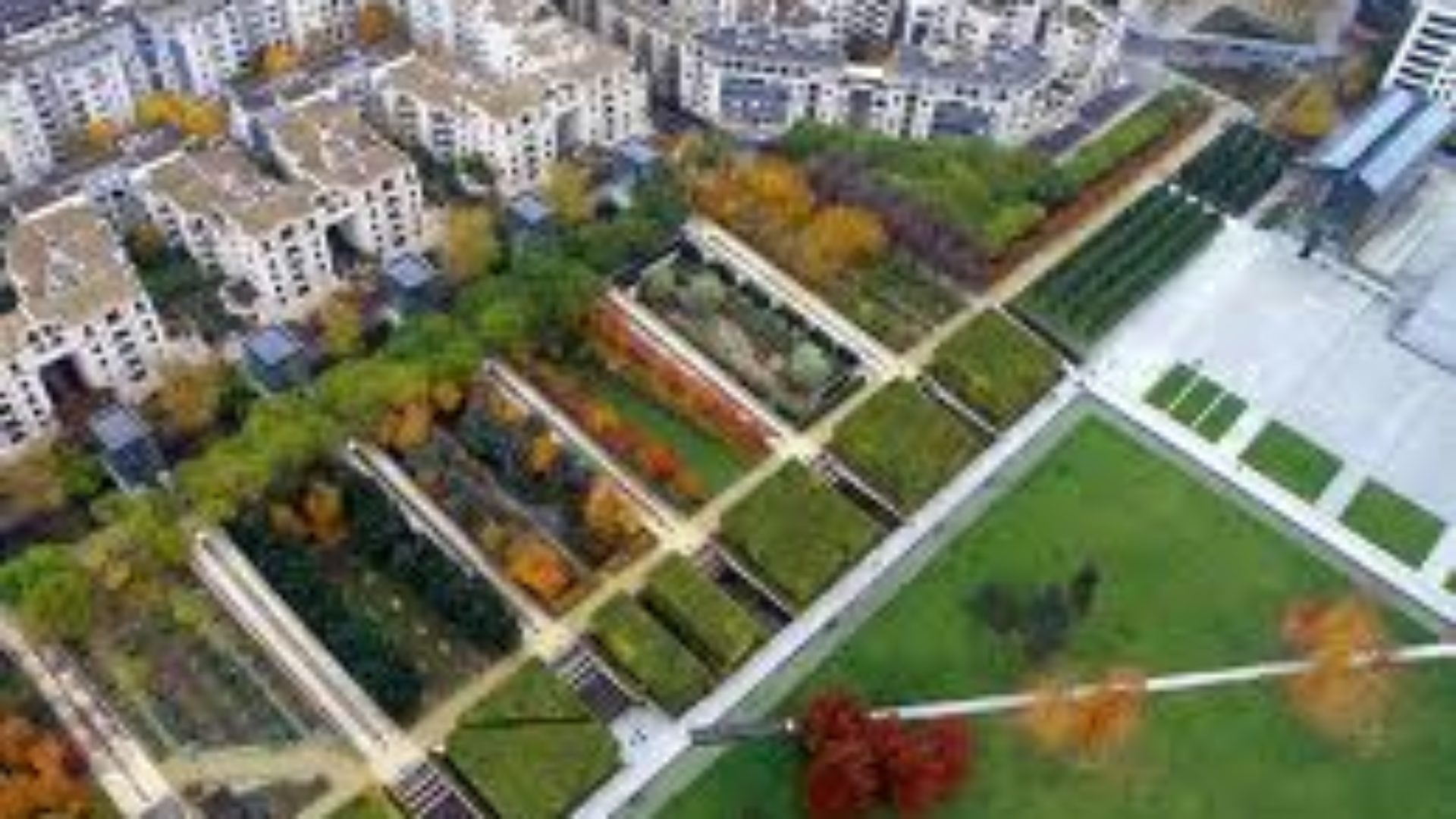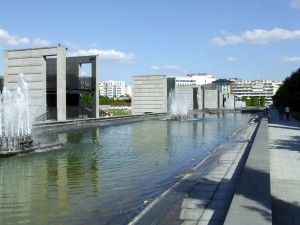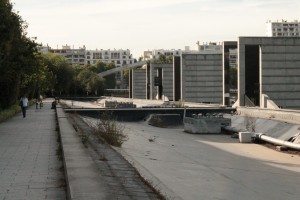In a recent trip to Paris, I made a point of visiting Parc André Citroën to the western side of the city. Wikipedia describes this succinctly as “… a 14 hectares (35 acres) public park located on the left bank of the river Seine in the XVe arrondissement (district) of Paris.” It was designed and built in the early 1990s by Landscape Architect Giles Clément and Architect Alain Provost on the site of a former Citroën automobile manufacturing plant, and is named after company founder André Citroën.
 The design is daring and the scale breath-taking. The central lawn alone is 275m long by 85m wide and refreshingly there are no restrictions on games (unlike most Paris parks). The design is a very strongly structured.
The design is daring and the scale breath-taking. The central lawn alone is 275m long by 85m wide and refreshingly there are no restrictions on games (unlike most Paris parks). The design is a very strongly structured.  Two vast pavilions overlook the park from the south east end. Between these is a paved terrace with a field of water spouts in which children splash around (similar to those at Somerset House and elsewhere). The central lawn is effectively sunk below the surrounding ground.
Two vast pavilions overlook the park from the south east end. Between these is a paved terrace with a field of water spouts in which children splash around (similar to those at Somerset House and elsewhere). The central lawn is effectively sunk below the surrounding ground.
On the south-west side it is flanked at the higher level by a canal, punctuated by at regular intervals by monolithic stone pavilions, alternatively housing staircases and cascades. On the other are colossal blocks of pruned hornbeam backed by a raised walkway. It is cut beneath by routes through to a series of secret gardens and also by enormous water chutes echoing the cascades on the other side of the lawn. Or it would be. Because sadly, most of the water features no longer function. The monumental canal on
the south west side lies forlornly empty, with nothing but a ruckled butyl liner to remind you that it was a water feature, along with a slightly ironic sign in French saying ‘for your safety, please do not enter the basin’ fixed to the concrete upstand in place of a missing coping stone. None of the water chutes on the other side function either, although the field of water jets still delights the children. The basic maintenance – grass cutting, pruning etc. has been carried out carefully. However, there is little evidence of ‘gardening’ in the half dozen or so themed gardens and whenever something breaks or fails, there is either no will or resources to replace it. The net result is a gradual decline in the park.
This is hardly an unfamiliar story to English ears. We have countless public parks and open spaces that have suffered the same fate. What interests me about Parc Citroën though, is how much of a part the original design (and perhaps more interestingly the commissioning process) played in its eventual decline. An article in the Boston Herald had a very good line on this. It said that “Citroën — for better or for worse — represents high-concept triumphant over public participation.” The article postulated that a project such as this could never have happened in Boston (and by extension I would say in the UK). The combination of vision, funding and single-minded project management meant the French Government was able to drive this project through with great speed and force. The piece went on to point out that there were good and bad sides to this. Interestingly, it was written shortly after the park’s opening, but the central point becomes even more strongly reinforced as time passes.
The design relies heavily on vast water features for much of its impact and structure. As landscape professionals, we all know what the implications in maintenance terms are for such features. How could the designers be sure that the funds would always be there to maintain and refurbish these features? The running costs alone are significant, but when the annualised costs of pump replacement, relining, etc. are taken into account, the bill becomes pretty much unsustainable in the longer term. Parc Citroën remains a great achievement and an exciting space. It is a reminder of what can be achieved by single minded vision. But clearly there is another lesson here. Perhaps we should all take more care to consider both the cash and skill resources that are likely to be (realistically) available for the future maintenance and management of a project before we let our imaginations (or should that be our egos) run wild.



